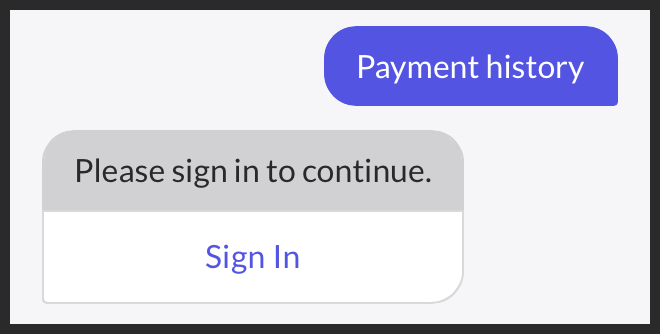Set an ASAPPUser with a Request Context Provider
As in the Quick Start section, you can connect to chat as an anonymous user by specifying a nil user identifier when initializing anASAPPUser. However, many use cases might require ASAPP to know the identity of the customer.
To connect as an identified user, please specify a user identifier string and a request context provider function. This provider will be called from a background thread when the SDK makes requests that require customer authentication with your company’s servers. The request context provider is a function that returns a dictionary with keys and values agreed upon with ASAPP. Please ask your Implementation Manager if you have questions.
Example:
Handle Login Buttons
If a customer connects to chat anonymously, they may be asked to log in when necessary by being shown a message button:
chatViewControllerDidTapUserLoginButton(). Please implement this method and set ASAPP.user once the customer has logged in. The SDK will detect the change and then authenticate the user. You may set ASAPP.user in any thread. Make sure to set the delegate as well: for example, ASAPP.delegate = self. See ASAPPDelegate for more details.